Year-ender: Top 10 captures by James Webb Telescope
Updated On Dec 24, 2022 06:44 PM IST
- The year 2022 began on a high note, with the world anticipating the James Webb Space Telescope (JWST) opening a new window to our universe. The telescope stood on the expectation and started delivering a never-before-seen view of space. The pictures taken from the James Webb Space Telescope (JWST) along with revealing deep secrets of space are also a magnificent sight to behold.
- Here are top 10 images taken by Nasa's Webb Telescope that altered our perceptions and understanding of the Universe.
1 / 10
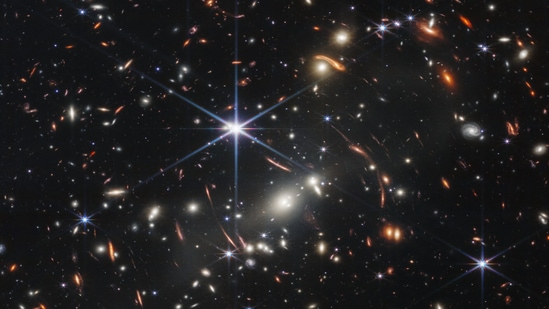
Updated on Dec 24, 2022 06:44 PM IST
Thousands of galaxies of galaxy cluster SMACS 0723 flood the first deep field image of James Webb Space Telescope.(NASA, ESA, CSA, STScI)
2 / 10
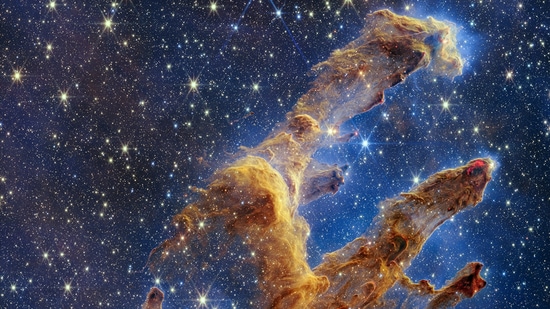
Updated on Dec 24, 2022 06:44 PM IST
The Webb telescope captured the Pillars of Creation, the region where young stars are forming - or have just burst from their dusty cocoons as they continue to form.(NASA, ESA, CSA, STScI)
3 / 10
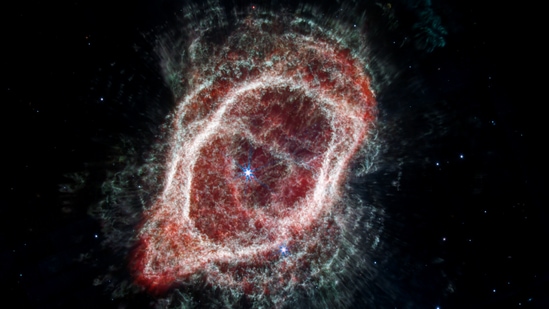
Updated on Dec 24, 2022 06:44 PM IST
Webb’s image of the Southern Ring Nebula traces the star’s scattered outflows that have reached farther into the cosmos.(NASA, ESA, CSA, STScI)
4 / 10
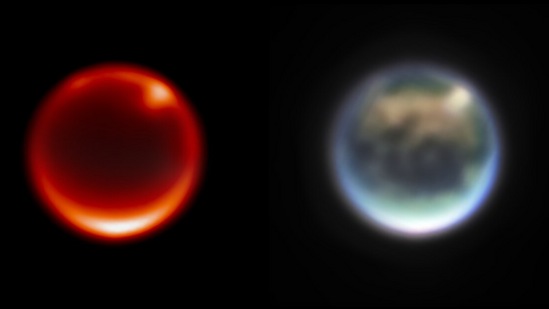
Updated on Dec 24, 2022 06:44 PM IST
Images of Saturn’s moon Titan, captured by the James Webb Space Telescope’s NIRCam instrument. Left image using F212N, a 2.12-micron filter sensitive to Titan’s lower atmosphere. Right Colour composite image using a combination of NIRCam filters.(NASA, ESA, CSA, STScI)
5 / 10
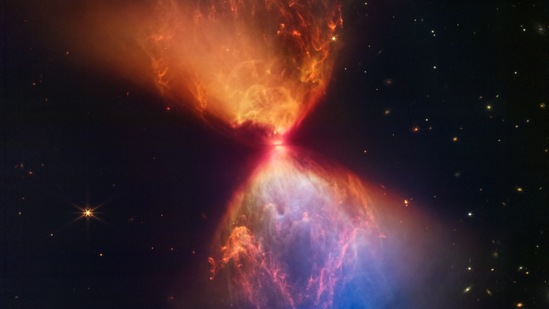
Updated on Dec 24, 2022 06:44 PM IST
The protostar within the dark cloud L1527, shown in this image from James Webb Space Telescope Near-Infrared Camera (NIRCam), is embedded within a cloud of material feeding its growth. (NASA, ESA, CSA, STScI)
6 / 10
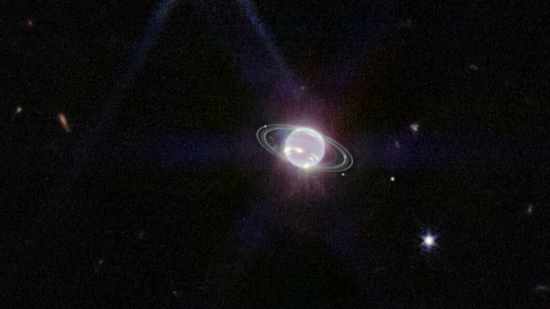
Updated on Dec 24, 2022 06:44 PM IST
This image of the Neptune system, captured by Webb’s Near-Infrared Camera (NIRCam), reveals stunning views of the planet’s rings, which have not been seen with this clarity in more than three decades.(NASA, ESA, CSA, STScI)
7 / 10

Updated on Dec 24, 2022 06:44 PM IST
Sparkling clusters of millions of young stars and starburst regions of fresh star birth grace the image. Sweeping tails of gas, dust and stars are being pulled from several of the galaxies due to gravitational interactions. (NASA, ESA, CSA, STScI)
8 / 10
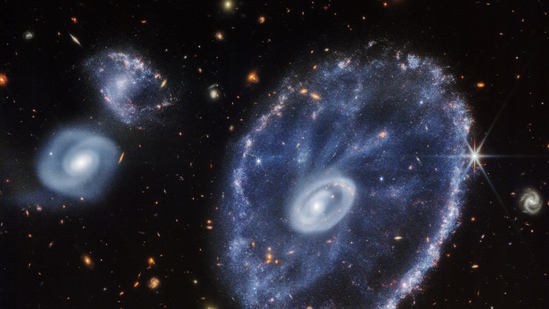
Updated on Dec 24, 2022 06:44 PM IST
This galaxy formed as the result of a high-speed collision that occurred about 400 million years ago. The Cartwheel is composed of two rings, a bright inner ring and a colourful outer ring. Both rings expand outward from the centre of the collision like shockwaves.(NASA, ESA, CSA, STScI, Webb ERO Production Team)
9 / 10
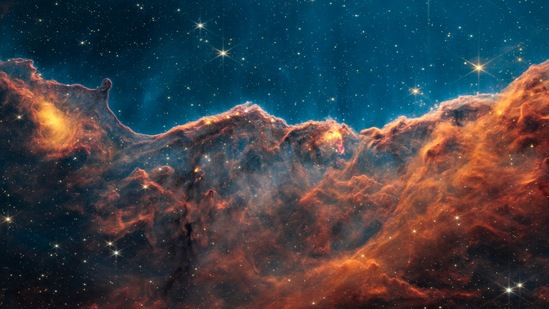
Updated on Dec 24, 2022 06:44 PM IST
The ‘Cosmic Cliffs’ of the Carina Nebula is captured in an image divided horizontally by an undulating line between a cloudscape forming a nebula along the bottom portion and a relatively clear upper portion.(NASA, ESA, CSA, STScI)
10 / 10
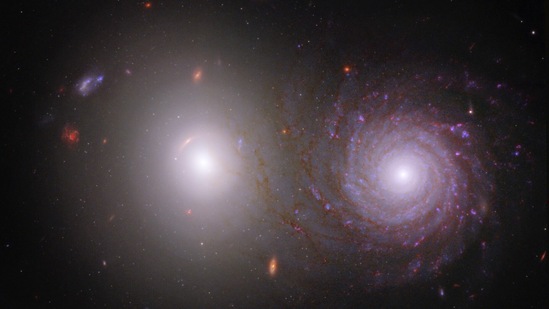
Updated on Dec 24, 2022 06:44 PM IST



